calsfoundation@cals.org
Hanger Hill Historic District
The Hanger Hill Historic District was nominated to the National Register of Historic Places in 2007 for its good examples of early twentieth-century architectural styles. This district contains the 1500 block of Welch Street, located in the eastern section of the city of Little Rock (Pulaski County) between the downtown area and the industrial park/airport zone. The Hanger Hill Historic District represents the post-Victorian heyday of concrete block construction and the transition from the Queen Anne architectural style to the Craftsman style in a primarily working-class neighborhood.
The Leifer Manufacturing Company is credited with the construction of this block of mostly concrete block houses. Their advertisement in the 1907 Little Rock City Directory shows a picture of the house at 1500 Welch Street. Also, the company was located at the foot of Ashley Street, which is modern-day 15th Street, meaning that the construction company and possibly the material to build the concrete block homes on Welch Street was found locally. Local directories and census research, coupled with the dominance of the Queen Anne and Craftsman styles, reveal that houses in the Hanger Hill District were constructed during the period of 1906–1925.
The Hanger Hill area is bounded by 9th Street on the northern edge, the railroad on the eastern edge, Oakland Fraternal Cemetery along its southern perimeter, and Interstate 30 on the west. The name of “Hanger Hill” was likely derived from the development of the Hanger Addition, which was formed when Peter Hanger, a prominent Little Rock figure, subdivided land adjacent to his home in 1869. That same year, nearby St. Johns’ College enclosed a square of ten acres for the campus and plotted the remaining ninety-five acres as the Masonic Addition to the city of Little Rock. The Masonic Addition is one of Little Rock’s oldest additions. Its boundaries are McAlmont Street to the west, 9th Street on the north, College Street on the east, and Oakland Cemetery and 17th Street to the south. Most of the 1869 Masonic Addition is now covered by the Interstate 630 interchange with Interstate 30; shortly after it was added to the city, however, the Masonic Addition was home to a great housing and population increase.
The residential development of the “East End” of the city was slightly stunted after this initial growth. “West End” development began outpacing those additions on the eastern edge of the city by the late 1870s. Much of this growth can be attributed to the creation of the streetcar, the organizers of which owned a large amount of land west of the city. Consequently, streetcar tracks hardly touched the eastern edge of the city.
The portion of the Hanger Hill Historic District nominated for the National Register of Historic Places comprises ten houses in a primarily working-class neighborhood—six of the ten houses are constructed with concrete block and all of the remaining structures are of modest size. This district is unique in the state for having such a large number of concrete block homes. All of these homes were built during the period between 1906 and 1925.
Efforts to preserve the Hanger Hill neighborhood started in 1998, when members of the community began meeting and raising money for a “Hanger Hill” sign that is posted on College Street. The community members meet every month to discuss improvements or issues that the neighborhood might be facing. One of the residents contacted the Arkansas Historic Preservation office to survey and possibly nominate the district to the National Register of Historic Places in 2006, and the nomination was completed and accepted in 2007. This has brought the community pride in their neighborhood and a desire to make further improvements.
For additional information:
Cotton, J. Randall. “Ornamental Concrete Block Houses,” Old House Journal (October 1984): 180–183.
Diaz, Lakresha. “Historic Hanger Hill.” Pulaski County Historical Review 63 (2015): 130–136.
Dornblaser, Wilson S. “How Little Rock Grew, Part IV.” Arkansas Gazette. November 7, 1931, pp. 1–3.
“Hanger Hill Historic District.” National Register of Historic Places nomination form. On file at Arkansas Historic Preservation Program, Little Rock, Arkansas. Online at http://www.arkansaspreservation.com/National-Register-Listings/PDF/PU5655.nr.pdf (accessed April 19, 2022).
King, Cyd. “Realtor Is High on Hanger Hill.” Arkansas Democrat-Gazette, May 24, 2015, pp. 1G, 2G.
Roy, F. Hampton, and Charles Witsell Jr., with Cheryl Griffith Nichols. How We Lived: Little Rock as an American City. Little Rock: August House, 1984.
Sara Drew
North Little Rock, Arkansas
Darcy Baskin
Little Rock, Arkansas
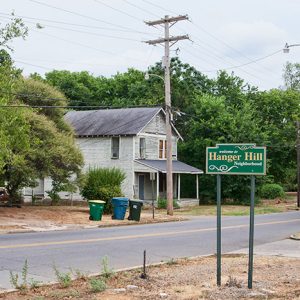 Hanger Hill Historic District
Hanger Hill Historic District 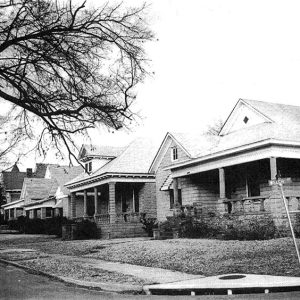 Hanger Hill Historic District
Hanger Hill Historic District 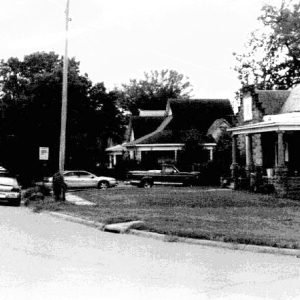 Hanger Hill Historic District
Hanger Hill Historic District 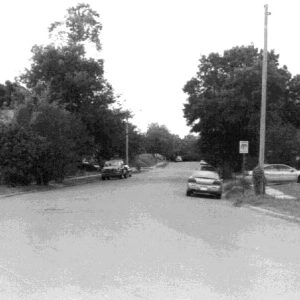 Hanger Hill Historic District
Hanger Hill Historic District 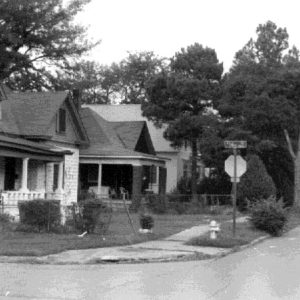 Hanger Hill Historic District
Hanger Hill Historic District 




According to the 1900 U.S. Census, my great-grandfather and my grandfather were living in the house on 911 College St.